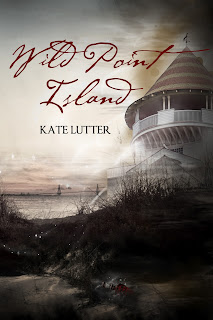I write commercial fiction. Paranormal romance. At times I catch a look, a smirk, an “Oh, really,” when I announce that fact. I suppose that some people want to ask me, “Well, why don’t you write real literature, you know, like what they made us read in school?”
Now, don’t get me wrong, my favorite novel of all time is Wuthering Heights. I adore Jane Eyre. And I am an American Lit major. Plus I’ve read every Shakespearean play. Well, almost. But, still I can appreciate that people enjoy commercial fiction.
Which leads me to share what I discovered a few months ago, approximately six months ago, when Anne Trubek, author of A Skeptic’s Guide to Writers’ Houses published an essay in the New York Times Book Review called, “What Muncie Read.” Maybe she had an axe to grind. Maybe she wanted to prove that all the high brows in today’s society who bemoan the fact that the readers of today read too much fluff and can’t compare with the readers of, say, 100 years ago, who supposedly read pure literature—are dead wrong.
Anne Trubek has evidence to support her claim.
It seems that Frank Felsenstein, a historian at Ball State University, discovered several unmarked boxes on a shelf in the Muncie Public Library—crumbling ledgers and notebooks, which identified every book checked out of the library from November 1891 to December 1902.
Felsenstein and colleagues began cataloguing the records. What emerged is now considered “one of the few authoritative records of American reading.”
So what were Americans reading at the turn of the century?
Great literature?
I have to admit that I wanted to know. Because I had sold my first novel, and it was not a great work of literature. Because Wild Point Island was commercial fiction, a paranormal Romance, I needed justification. Even though the reader reviews were calling it a page turner, I couldn’t help but wonder that if my book had been published back in 1891, how would it have fared among the population of Muncie, Indiana?
Overall, here are some of the startling statistics from the records:
--Fiction was preferred over non-fiction, accounting for 92% of the books read in 1903.
--Women read romances.
--Kids read pulp fiction.
--White-collar workers read mass market titles.
--The most popular author read during that time period was Horatio Alger, famous for his rags to riches novels. Five percent of all books checked out were by him, which meant that the readers back then preferred feel good, happy ending stories. (Since 50% of books sold today are romance novels, not much has changed.)
--Louisa May Alcott is the only author who was widely read back then who can be considered both literary and popular. Her novel Little Men was actually more popular than Little Women because both boys and girls read it. The other authors who were most often checked out are today unknowns.
--Comparatively speaking: the number of times an author was checked out:
Charles Dickens: 672 times
Walter Scott: 651 times
Shakespeare: 201 times
Henry James' longer novels: 0 times
Walt Whitman's poetry: 0 times
Francis Marion Crawford (Here novels were set in Italy and the Orient): 2,120 times
(Would the Muncie townspeople have enjoyed a novel set on a mythical island off the coast of North Carolina like Wild Point Island? Maybe.)
Mark Twain, The Adventures of Huckleberry Finn,: 149 times (even though it was banned in some libraries back then)
--Some other books which were banned from the Muncie library included Karl Marx and Stephen Crane’s Maggie: A Girl of the Streets.
--Blue-collar workers were slightly more likely to check out the so-called “classics” because the white-collar workers already had them in their houses.
As to whether people had more time to read in those days, in the 1920’s the Lynds, authors of Middletown: A Study in American Culture, surveyed business-class women about reading: “I would read if only I had the energy and quiet,” one said. “I just read magazines in my scraps of time,” the other said.
Some things never change. People still complain today about the lack of time to relax and do the things they want to do.
My conclusion: The people of Muncie, Indiana, were remarkably like the people of today. They preferred to read the "fluff" over the "classics."
If I lived at the turn of the century and were a writer, my novel Wild Point Island would have done just fine.
If you would like to see a list of the most popular books that were taken out way back when, here is the link: http://whatmiddletownread.wordpress.com/
Wild Point Island is available at Amazon.com and Barnes and Noble.com. I can be reached at www.katelutter.com I also write a weekly exotic travel blog called Hot Blogging with Chuck at www.katelutter.blogspot.com

No comments:
Post a Comment